Birdfinding.info ⇒ Among the most numerous and widespread of all birds, its annual movements take it throughout most of the Pacific, Atlantic, and Southern Oceans—though it is scarce in the Indian Ocean. Especially abundant around New Zealand and in cold currents such as the Humboldt, California, and Benguela. Often seen on pelagic trips from ports on both coasts of North America, South America, South Africa, Japan, and eastern Australia. More likely than most other shearwaters to be seen from shore.
Sooty Shearwater
Ardenna grisea
Breeds in the temperate zone of the South Pacific and South Atlantic Oceans. Disperses throughout the world’s oceans.

Approximate distribution of the Sooty Shearwater. © Xeno-Canto 2021
Breeding. Breeds mainly from November to April on islets around New Zealand, southeastern Australia, southern Chile, and the Falkland Islands.
In the southwestern Pacific, the vast majority of the population breeds in New Zealand, where approximately 180 colonies span from the Three Kings northwest of North Island south to islets around Stewart Island, and on five outlying archipelagos: the Snares, Auckland, Campbell, Antipodes and Chatham Islands—with the bulk nesting around Stewart Island (>1 million pairs) and on the Snares (~2 million pairs). There are approximately 17 colonies on islets adjacent to Australia, each less than 1,000 pairs.
Around South America, the vast majority of the population breeds in southern Chile, most on Isla Guafo (~2 million pairs). The Falkland Islands are thought to support between 10,000 and 20,000 pairs.

Tracks of geolocators attached to Sooty Shearwaters from New Zealand.
Nonbreeding. Disperses nearly worldwide at sea, with the majority following particular migratory patterns and small numbers that deviate from those patterns.
Most of the New Zealand population migrates to the North Pacific to one of four areas: east of Japan, east of Kamchatka, the Gulf of Alaska, or along the West Coast from British Columbia to central California. Between the 1970s and the 2000s, the numbers detected off of California declined dramatically—by about 90%–but it remains unclear whether this is due to a population crash or a shift in distribution.
Some portion of the South American population evidently migrates to the North Pacific as well, while another, smaller portion migrate to the North Atlantic and winters mainly in Canadian waters from the Labrador Sea to Nova Scotia and the Gulf of Maine.
Another substantial portion of the South American population migrates to the Benguela Current west of Namibia and South Africa.
Significant numbers remain year-round in the Humboldt Current region from Ecuador to southern Chile. Smaller numbers are present during all months in all other areas of its global range, especially in the waters where large numbers congregate seasonally.

Tracks of geolocators attached to Sooty Shearwaters from the Falkland Islands.

Sooty Shearwaters aggregate in enormous flocks that number in the tens or hundreds of thousands. (Monterey Bay, California; July 29, 2014.) © James Maughn
Much smaller numbers (perhaps in the dozens or hundreds) migrates to the northwestern Indian Ocean and winters along the Arabian Peninsula.
Movements. Most New Zealand breeders migrate in a roughly figure-8 path around the Pacific. In March and April, they initially head east across the temperate waters of the South Pacific, then turn northwest to cross the central Pacific and arrive in northern waters where they remain until September. Then from September to November they turn south, then southwest toward New Zealand.
The South American breeders that winter in the North Atlantic also apparently follow a roughly figure-8 path: first migrating toward South Africa in March, then heading northeast to the western North Atlantic in April and May, then departing east or southeast toward Europe in September, then returning south and eventually crossing from the Cape Verde region to near-coastal waters of Brazil and Argentina, reaching their breeding areas in October and November.
Identification
A medium-large shearwater with narrow, pointed wings. All-dark except for its underwings, which typically have prominent, broad white patches.
Nearly identical to the Short-tailed Shearwater, which occurs with it throughout the Pacific Ocean. Differences between the two are subtle and often ambiguous. (See detailed comparison provided below.)
The bill is long and thin. Both the bill and the legs are gray (though the legs can be pinkish).
Overall coloration usually appears sooty—hence the name—or some shade of ashy brownish-gray. Depending on the lighting and feather-wear, it can appear brown (sometimes pale or mottled brown), but more often appears closer to charcoal-gray, sometimes all-black.
On the upperwing, its secondaries or secondary coverts often have a pale, silvery flash.

Sooty Shearwater, appearing typically sooty with white wing-linings. (Offshore from Tofino, British Columbia; October 21, 2018.) © David M. Bell
On the underwing, it typically shows a bold white panel on the wing-linings, although this varies widely and depends in part on lighting.
Characteristically—unlike typical Short-tailed—the white underwing area is broadest and brightest on the primary coverts—mostly past the wrist. On many if not most Sooties, the white area on the secondaries principally consists of one or two narrow strips (also unlike typical Short-tailed).
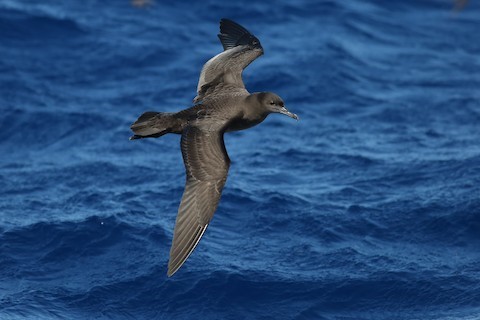
Sooty Shearwater. (Offshore from Hatteras, North Carolina; June 1, 2020.) © Kate Sutherland

Sooty Shearwater. (Offshore from Chatham, Massachusetts; September 2, 2018.) © suburbanskua

Sooty Shearwater, appearing typically sooty with white wing-linings. (Offshore from Tofino, British Columbia; October 21, 2018.) © David M. Bell

Sooty Shearwater. (Offshore from Tofino, British Columbia; October 21, 2018.) © Blair Dudeck
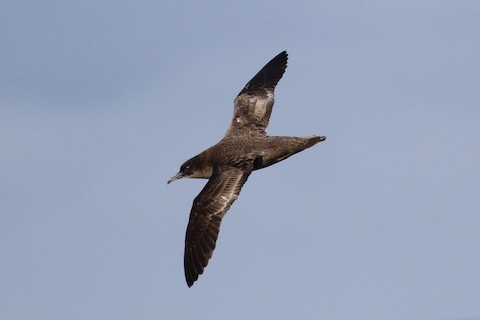
Sooty Shearwater, showing pale flashes on the secondaries. (Offshore from Eaglehawk Neck, Tasmania, Australia; May 27, 2018.) © Robert Hamilton
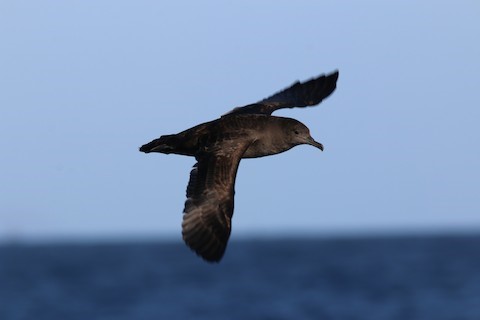
Sooty Shearwater, showing all-dark upperparts. (Offshore east of Kodiak Island, Alaska; October 18, 2018.) © Richard MacIntosh
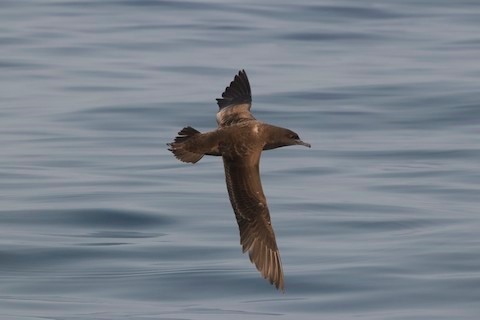
Sooty Shearwater. (Offshore from Chatham, Massachusetts; August 16, 2018.) © Peter Trull
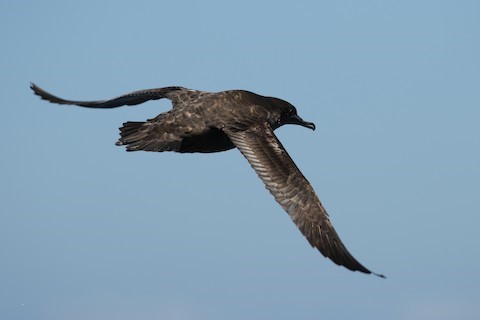
Sooty Shearwater. (Hauraki Gulf, New Zealand; February 15, 2018.) © Cameron Eckert

Sooty Shearwater. (Offshore from Kaikoura, South Island, New Zealand; November 23, 2017.) © Hiroyuki & Shoko Tanoi

Sooty Shearwater. (Monterey Bay, California; August 23, 2019.) © Darren Clark
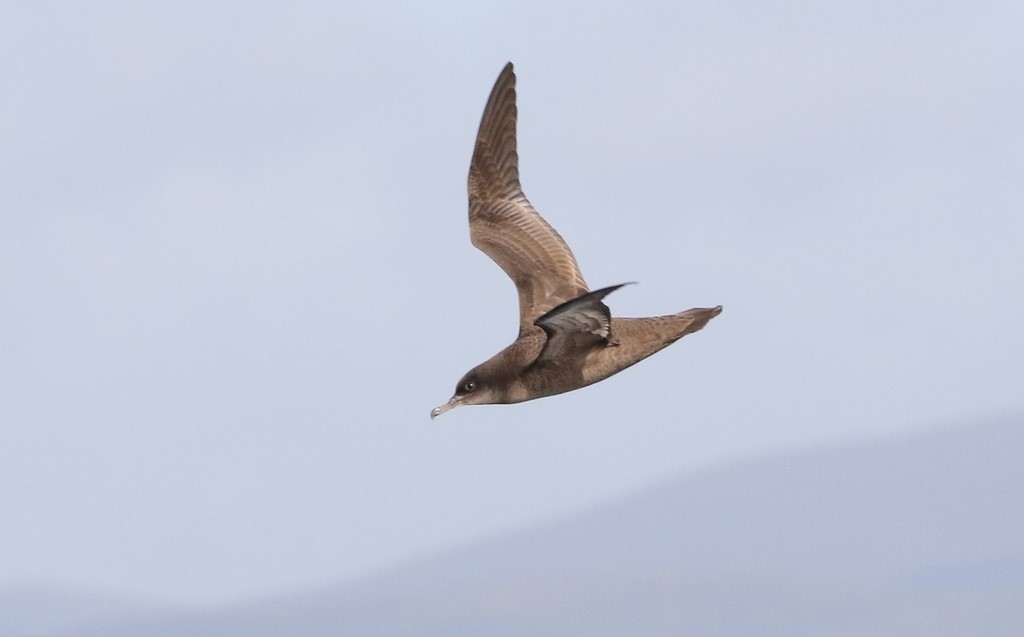
Sooty Shearwater, appearing generally pale-brown. (Offshore east of Stewart Island, New Zealand; March 1, 2019.) © James Bailey

Sooty Shearwater. (South of Anacapa Island, California; July 12, 2020.) © Alexander Viduetsky
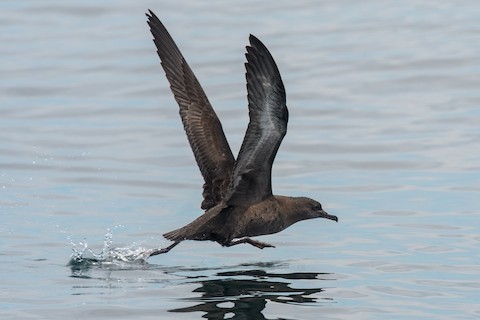
Sooty Shearwater. (Offshore from Pubnico, Nova Scotia; August 11, 2018.) © Richard Stern
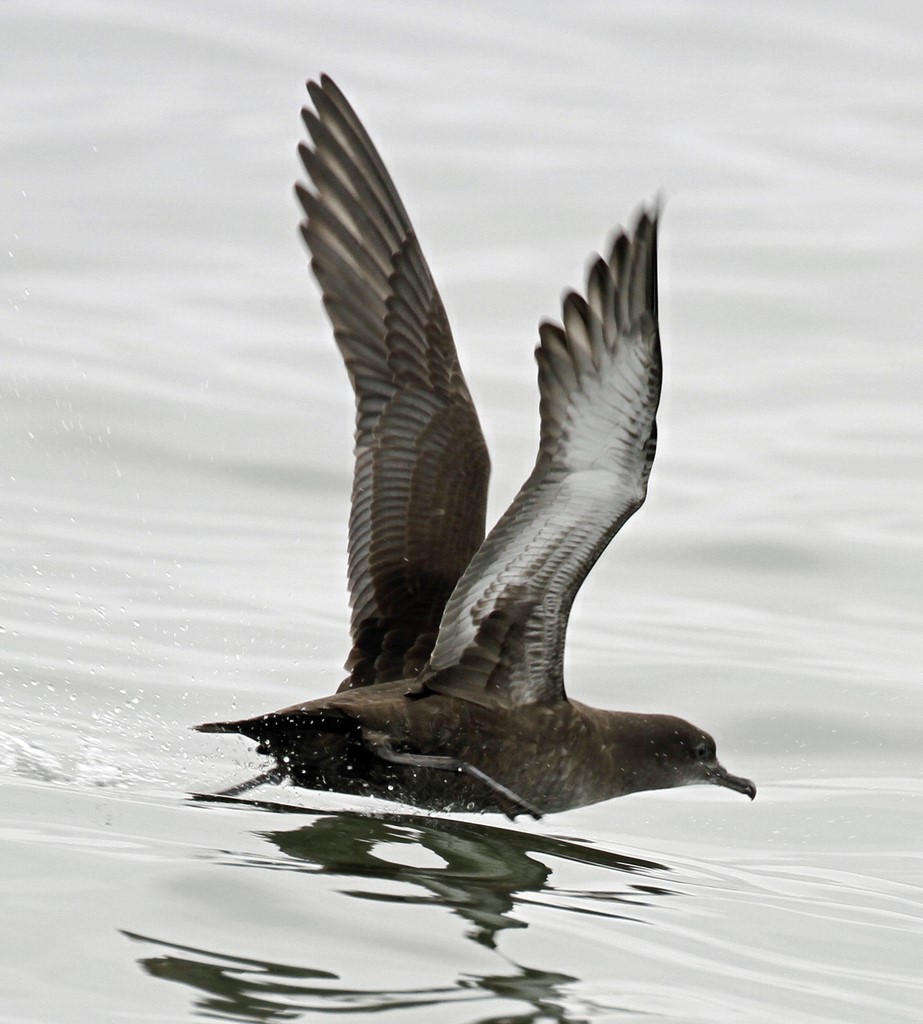
Sooty Shearwater. (Monterey Bay, California; August 29, 2017.) © Robin Gwen Agarwal

Sooty Shearwater. (North of Nantucket, Massachusetts; August 10, 2018.) © Sean Williams

Sooty Shearwater, showing characteristically contrasting white wing linings. (Offshore from Tofino, British Columbia; October 21, 2018.) © David M. Bell
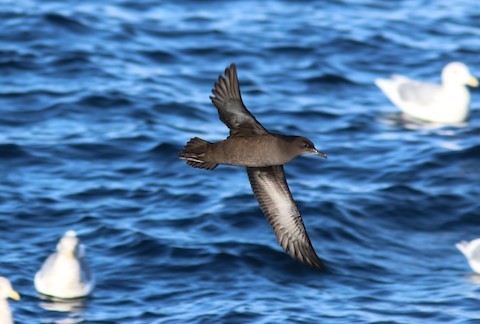
Sooty Shearwater. (Offshore east of Kodiak Island, Alaska; October 18, 2018.) © Richard MacIntosh
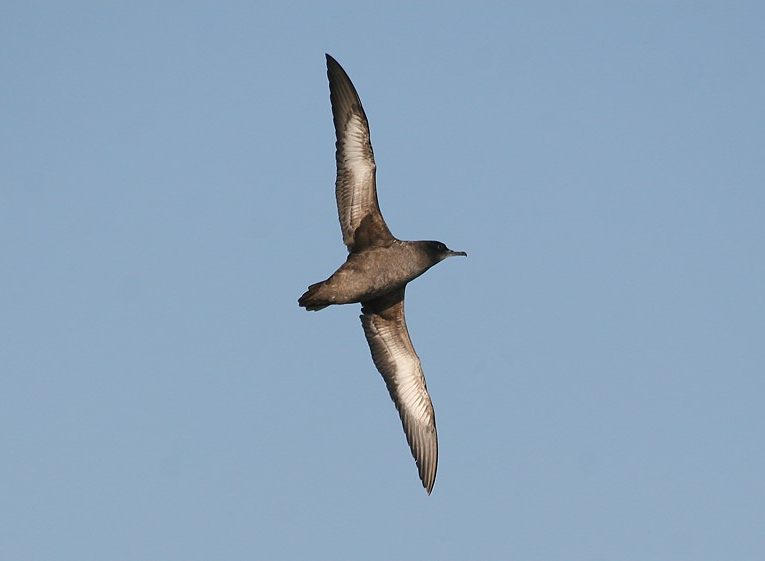
Sooty Shearwater. (Monterey Canyon, California; October 23, 2011.) © Will Richardson
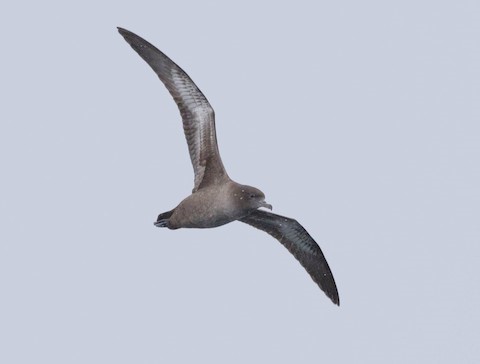
Sooty Shearwater. (Offshore east of Stewart Island, New Zealand; January 4, 2019.) © Koel Ko
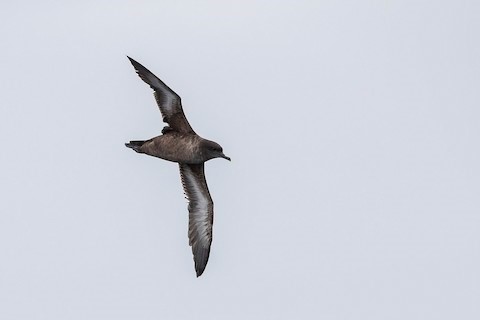
Sooty Shearwater. (Offshore from Durban, KwaZulu-Natal, South Africa; October 18, 2020.) © Niall D. Perrins
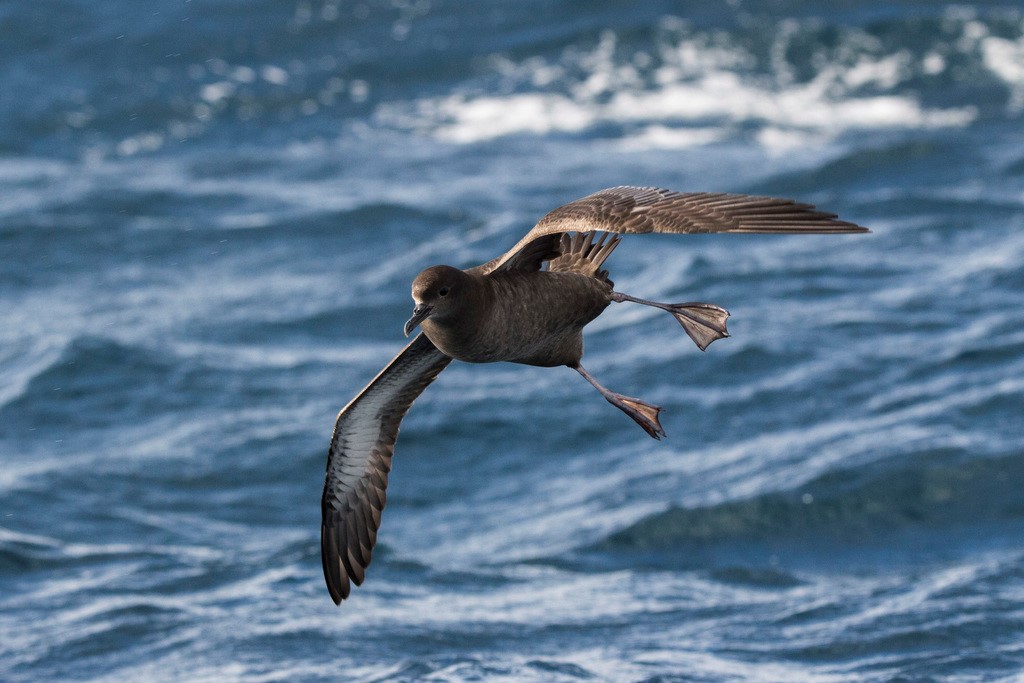
Sooty Shearwater. (Offshore from Ruapuke Island, New Zealand; April 18, 2018.) © Oscar Thomas
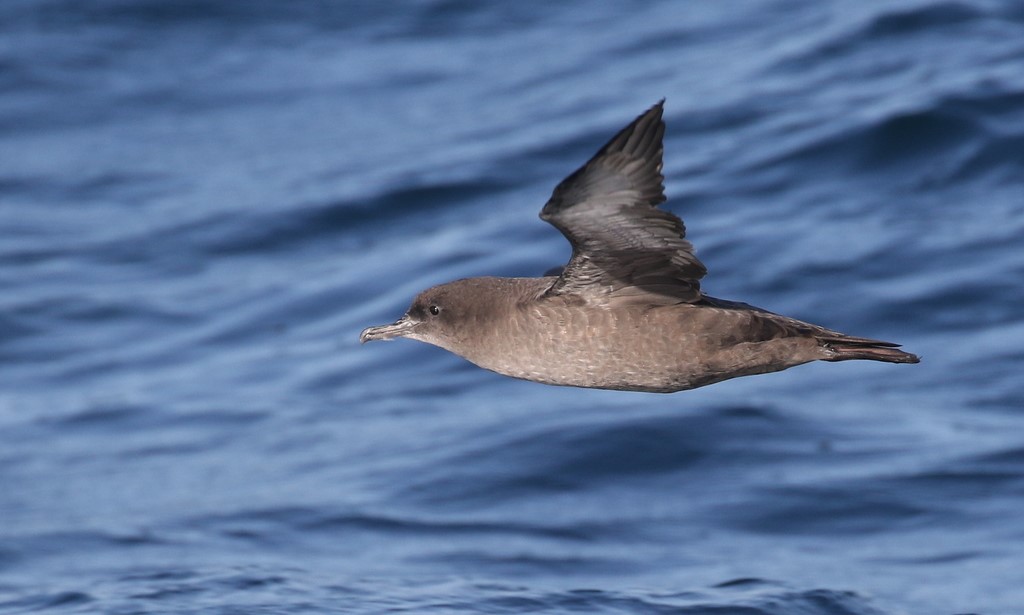
Sooty Shearwater. (South of Anacapa Island, California; July 12, 2020.) © Matthew Grube

Sooty Shearwater. (Offshore from Wollongong, New South Wales, Australia; October 2009.) © Brook Whylie
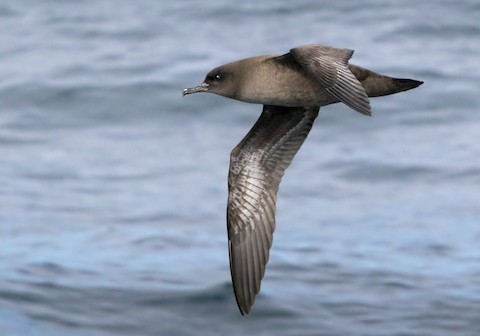
Sooty Shearwater. (Offshore east of Stewart Island, New Zealand; November 30, 2018.) © Lars Petersson

Sooty Shearwater. (Offshore from South East Island, Chatham Islands, New Zealand; November 24, 2014.) © Michael Stubblefield

Sooty Shearwater. (Offshore from the Banks Peninsula, South Island, New Zealand; April 24, 2009.) © David Boyle
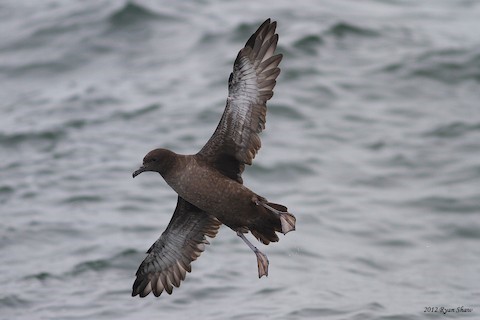
Sooty Shearwater. (Offshore from Westport, Washington; July 14, 2012.) © Ryan Shaw

Sooty Shearwater. (Monterey Bay, California; September 14, 2017.) © Donna Pomeroy

Sooty Shearwater. (Offshore from Tofino, British Columbia; October 21, 2018.) © David M. Bell
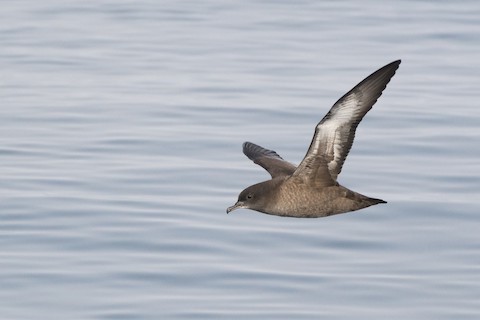
Sooty Shearwater. (Offshore from Bodega Bay, California; August 25, 2019.) © Darren Clark

Sooty Shearwater. (Offshore from Cape Point, Cape Town, South Africa; August 18, 2018.) © Niall D. Perrins

Sooty Shearwater, showing mostly dark underparts and underwings. (Offshore from Tofino, British Columbia; October 21, 2018.) © David M. Bell

Sooty Shearwater. (Offshore from Bodega Bay, California; August 25, 2019.) © Darren Clark
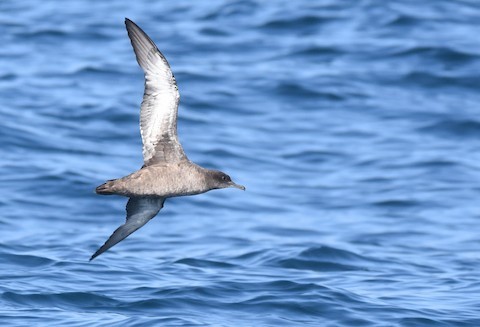
Sooty Shearwater, showing maximally white underwings and pale underparts. (South of Santa Cruz Island, California; July 12, 2020.) © Christopher Lindsey
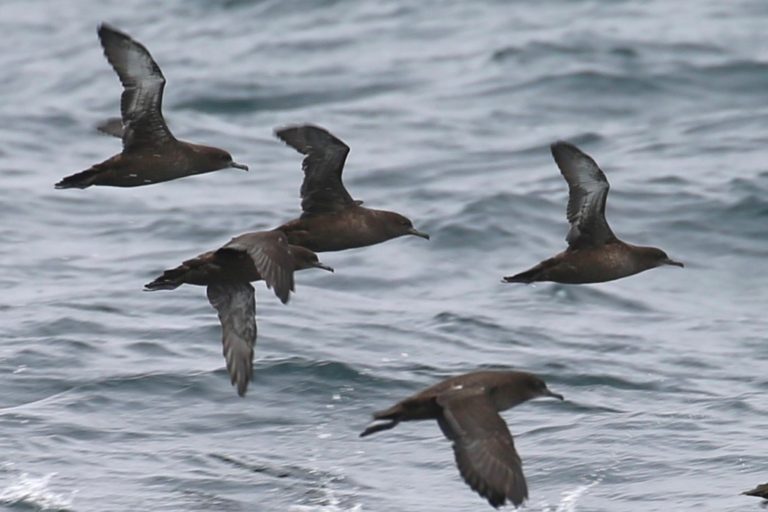
Sooty Shearwaters, showing differing underwing patterns. (Offshore from Moss Beach, California; July 25, 2020.) © Keith Gress

Sooty Shearwater. (Offshore from Bodega Bay, California; August 25, 2019.) © Darren Clark
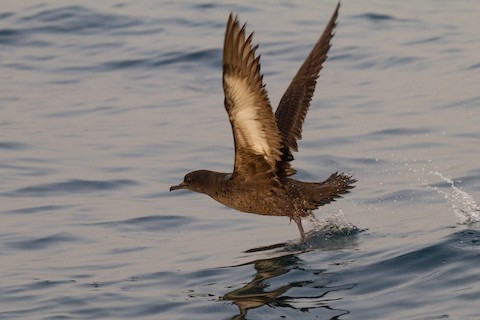
Sooty Shearwater with evenly white underwing coverts. (Offshore from Khor Kalba, Fujairah, United Arab Emirates; May 14, 2011.) © Tommy Pederson
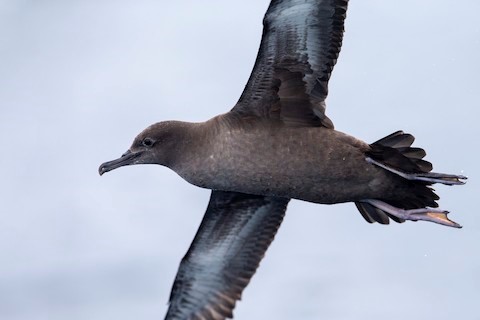
Sooty Shearwater, showing atypically pink legs and feet. (South East Island, Chatham Islands, New Zealand; November 24, 2014.) © Michael Stubblefield
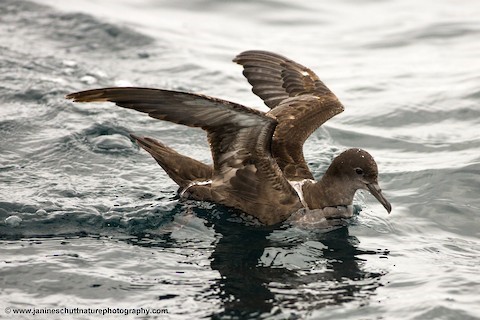
Sooty Shearwater. (Offshore from Westport, Washington; August 17, 2019.) © Janine Schutt
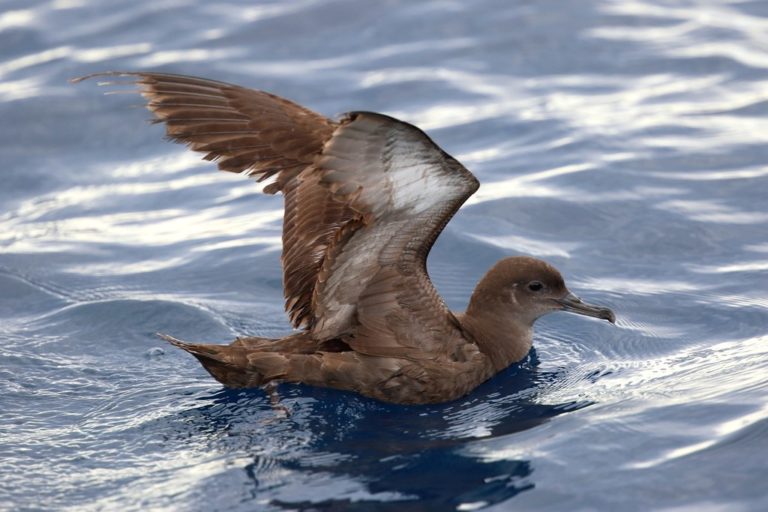
Sooty Shearwater. (Offshore from Los Angeles, California; February 29, 2020.) © David J. Barton
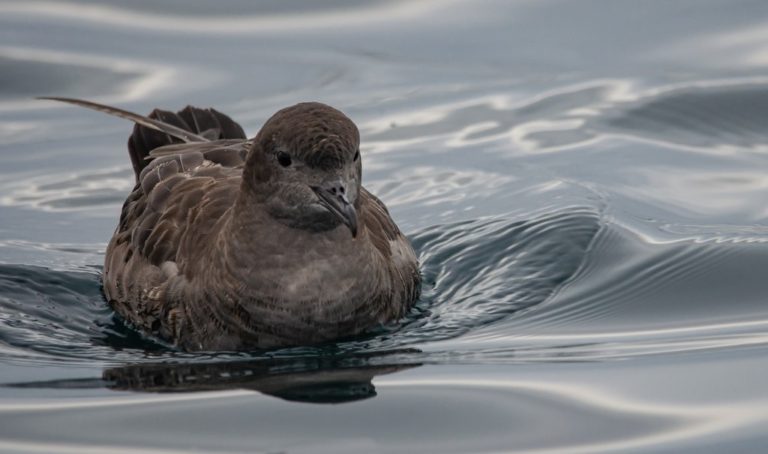
Sooty Shearwater. (Offshore from Westport, Washington; July 13, 2019.) © Mason Maron
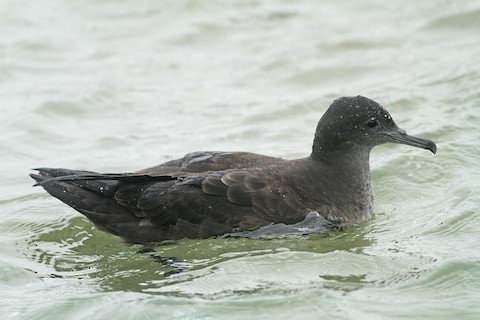
Sooty Shearwater. (Race Point Beach, Provincetown, Massachusetts; August 19, 2017.) © Jeremiah Trimble
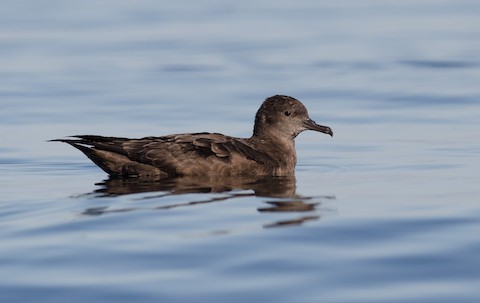
Sooty Shearwater. (Offshore east of Cape Sable Island, Nova Scotia; August 2, 2020.) © Alix d’Entremont
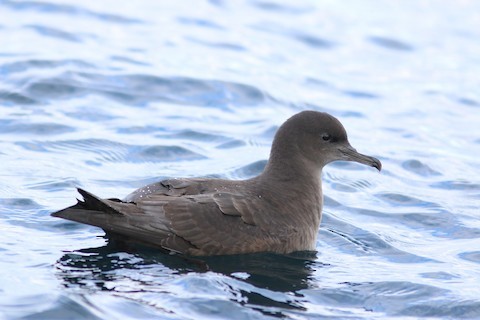
Sooty Shearwater. (Offshore northeast of Kodiak Island, Alaska; September 21, 2017.) © Richard MacIntosh

Sooty Shearwater, an abnormally pale-brown, mottled individual. (Offshore from Westport, Washington; August 12, 2018.) © Blair Bernson

Sooty Shearwater. (Offshore from Hatteras, North Carolina; June 1, 2020.) © Ed Corey
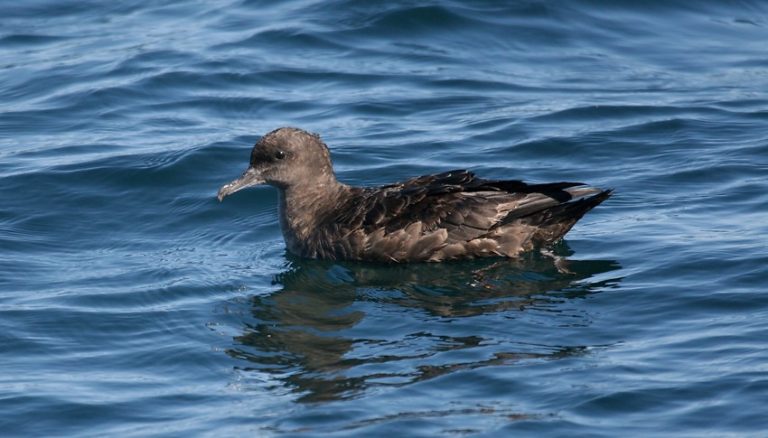
Sooty Shearwater. (Monterey Canyon, California; October 23, 2011.) © Will Richardson

Sooty Shearwater. (South of Grand Manan Island, New Brunswick; July 18, 2013.) © Sue & Gary Milks
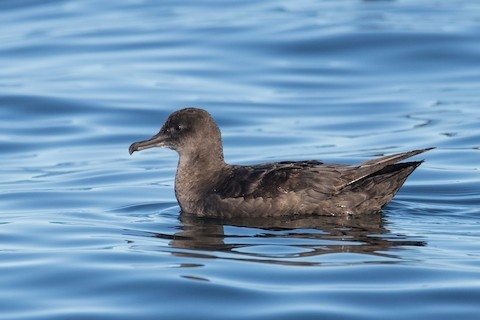
Sooty Shearwater. (Offshore from Cape Point, Cape Town, South Africa; March 1, 2019.) © Peter Steward
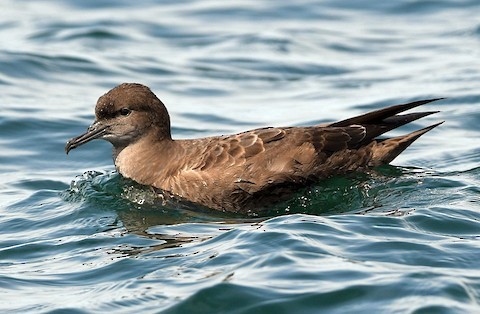
Sooty Shearwater. (Offshore east of Plum Island, New York; July 29, 2018.) © David Provencher

Sooty Shearwater. (Offshore from Kaikoura, South Island, New Zealand; May 2015.) © Les Feasey
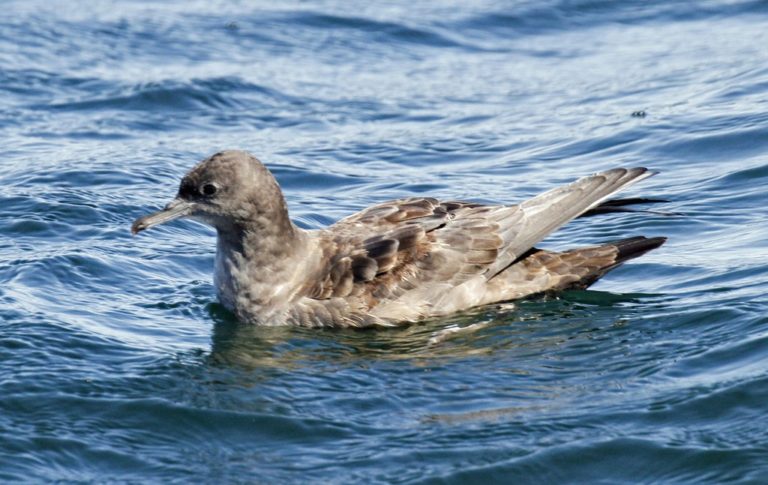
Sooty Shearwater, a peculiarly pale individual. (Monterey Bay, California; September 28, 2017.) © Robin Gwen Agarwal
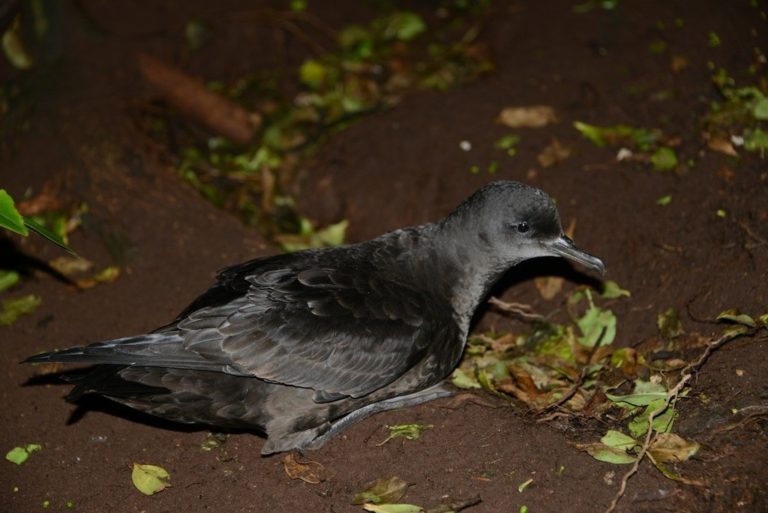
Sooty Shearwater. (Pitt Island, Chatham Islands, New Zealand; January 25, 2014.) © obscurus
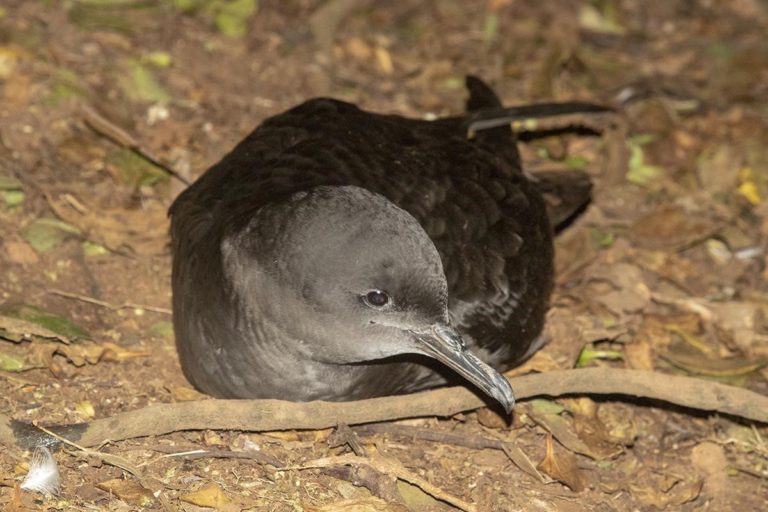
Sooty Shearwater. (Rangatira Island, Chatham Islands, New Zealand; October 2020.) © James Russell
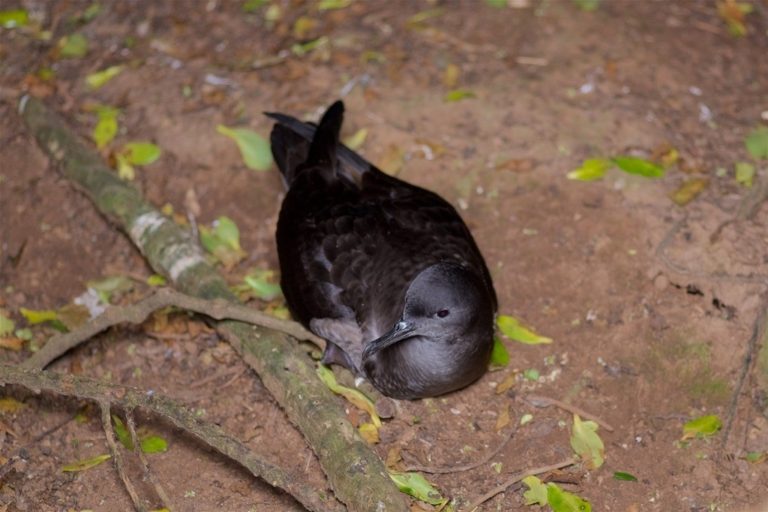
Sooty Shearwater. (New Zealand; October 10, 2018.) © absoluteandy

Sooty Shearwater. (Stephens Island, New Zealand; January 2013.) © Sabine Bernert
Cf. Short-tailed Shearwater. Sooty and Short-tailed Shearwaters occur together throughout the Pacific Ocean, and present one of the more difficult identification challenges routinely encountered at sea. They have nearly identical plumage except for variable differences on the underwings. Sooty averages larger, but their measurements overlap, so impressions of size are generally unreliable. Features that seem to be consistently useful are the underwing pattern, bill size, head shape, and wing-to-body ratio (and its effect on flight pattern).

Sooty Shearwater, showing typical underwing pattern, whitest beyond the wrist. (Monterey Canyon, California; October 23, 2011.) © Will Richardson
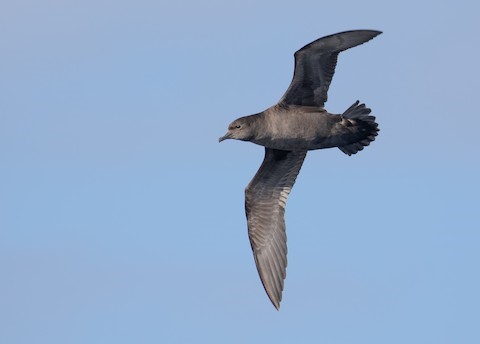
Short-tailed Shearwater—note even tone on underwing, small bill, steep forehead, and rounded tail. (Offshore from Eaglehawk Neck, Tasmania, Australia; January 24, 2021.) © Paul Brooks
Underwing Pattern: In photographs and in the field, the most consistent observable difference between Sooty and Short-tailed Shearwaters is the color and pattern on the underwings—despite the fact that both are highly variable intrinsically and due to lighting.
In general, Short-tailed’s underwings show less contrast than Sooty’s. Short-tailed’s underwings often appear uniformly gray or show a paler-gray stripe in the middle, of approximately uniform width. In some cases, however, Short-tailed may show more contrast and therefore resemble Sooty. In most of these cases, the whitest area is on the secondary coverts—i.e., between the body and the wrist.
In general, Sooty’s underwings show strong contrasting white linings that form an uneven stripe in the middle of the wing. In most cases, the white underwing area is broadest and brightest on the primary coverts—i.e., from the wrist toward the tips. On most Sooties, the white area between the wrist and the body is broken up by darker feathers, and on many it is limited to one or two narrow strips.
As with Short-tailed, Sooty’s underwings are highly variable. A few individuals appear to have all-dark underwings or just a slightly paler central stripe—these are confusing cases, although most of them show at least a slightly brighter and broader pale area on the primary covert.
Note that if the lighting is strong, especially when the wing is turned slightly, glare can play tricks with the coloration and the underwing pattern becomes useless for identification.

Sooty Shearwaters, showing variation in underwing patterns. (Offshore from Moss Beach, California; July 25, 2020.) © Keith Gress

Short-tailed Shearwater—note atypically strong contrast on underwing, resembling Sooty’s typical pattern. (Offshore from Eaglehawk Neck, Tasmania, Australia; January 24, 2021.) © Ramit Singal
Bill Size: According to sources that provide bill measurements, there is no overlap between Sooty and Short-tailed Shearwaters: e.g., 38-47 mm versus 29-35 mm (Howell 2012). All adult Sooties have longer bills than all adult Short-taileds. Moreover, Short-tailed also has a shallower and thinner bill (it was formerly known as the Slender-billed Shearwater).
However, the bills of female and immature Sooties are shorter than those of adult males, and appear to be very close to the bills of adult male Short-tailed. In other words, bill size is a reliable indicator overall, and useful as a field mark about half the time—i.e., for adult male Sooty and female and immature Short-tailed—but likely to be ambiguous in many cases.
Head Shape: Along with bill size, Sooty and Short-tailed Shearwaters tend to show accordingly differing head shapes. In general, Short-tailed has a steep forehead and dovish face and head shape, whereas Sooty has a sloped forehead and larger-looking head. These tendencies are fairly consistent, but not always easy to judge, in part because they vary depending on posture and angle-of-view.
Body-to-Wing Ratio: Sooty has the highest ratio of body weight to wing area (i.e., the highest “wing-loading”) of any Ardenna or Calonectris shearwater. Sooty’s wings are narrow and it tends to be heavy-bodied. Short-tailed’s ratio is more consistent with other shearwaters. Its wing area is fairly close to Sooty’s whereas its body weight is about 80% in comparable circumstances: e.g., 480-800 g versus 650-978 g (Brazil 2009).
Wing size (or shape) on its own is not a reliable indicator because it varies widely due to factors including posture, molt-stage, wind conditions, and angle of view. That said, however, on balance, relative to body-size, Short-tailed’s wings are proportionately longer, broader, and more round-tipped than Sooty’s.

Sooty Shearwater, showing sloped forehead, large head, and long bill. (Offshore east of Plum Island, New York; July 29, 2018.) © David Provencher
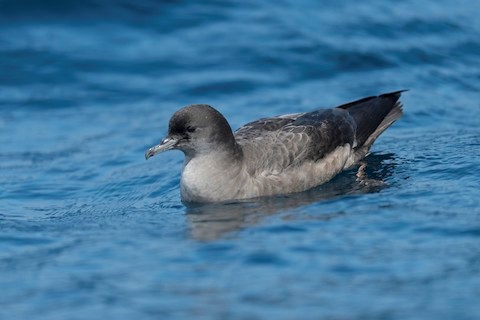
Short-tailed Shearwater, showing typically steep forehead and “dovish” head shape. (Offshore from Eaglehawk Neck, Tasmania, Australia; October 31, 2019.) © Michael Fuhrer
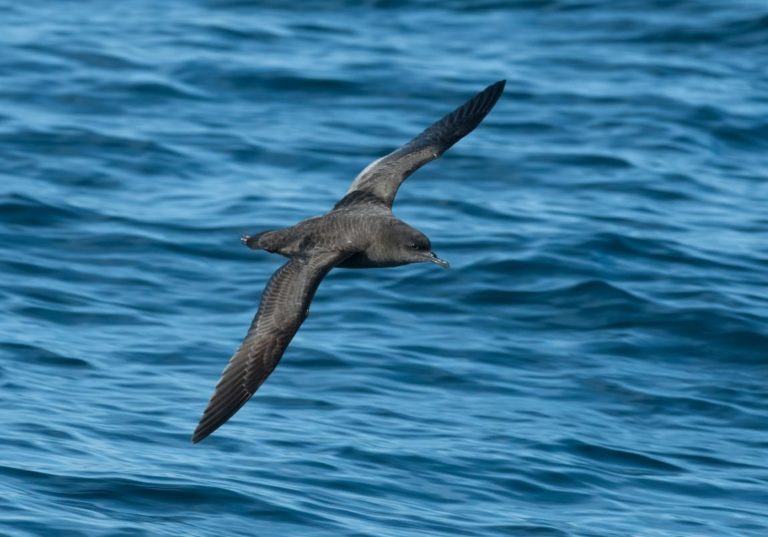
Sooty Shearwater—an ambiguous individual with a short tail and steep forehead. (Offshore from the Otago Peninsula, South Island, New Zealand; April 2012.) © Craig Mackenzie

Short-tailed Shearwater, with a fairly large bill (thus probably a male) but characteristically steep forehead. (Offshore from Tanjung Dawai, Kedah, Malaysia; May 23, 2017.) © Dave Bakewell
Flight Pattern: Due to their differences in wing-loading, Sooty and Short-tailed Shearwaters tend to fly differently under comparable conditions. This is often immediately noticeable to observers who are very familiar with one or both species. In general, Sooty has a more active, arcing flight pattern, whereas Short-tailed is more languid.
Tail Length: Both Sooty and Short-tailed Shearwaters have short tails—in fact, their lengths overlap: 83-97 mm versus 74-87 mm (Howell 2012). Both tend to trail their feet behind the ends of their tail feathers. Sooty tends to have relatively longer central tail feathers, show its tail may appear more wedge-shaped, whereas Short-tailed’s appears rounded, but this difference is minor and probably unreliable in most cases.
Head Contrast: Many authors have commented that Short-tailed tends to show a pale chin or throat and dark cap, whereas Sooty’s head appears more uniform. This may be true in some cases, but is not consistent enough to be useful in identification.
Cf. Wedge-tailed Shearwater. Dark morph Wedge-tailed can have plumage tones and pattern that are effectively identical to those of Sooty Shearwater. They are approximately the same size overall and have similar bills—although some Wedge-tailed have pale bills and most have pale, pinkish feet, unlike Sooty. Some Wedge-taileds clarify their identity by showing an unambiguously long, wedge-shaped tail. Another fairly consistent distinction is underwing pattern. This varies in both species, but most Sooty Shearwater show a strong contrast between white underwing linings and dark flight feathers whereas dark morph Wedge-tailed tends to have little contrast between the wing linings and the flight feathers (like Short-tailed rather than Sooty).
Cf. Christmas Shearwater. Christmas, Sooty, and Short-tailed Shearwaters overlap widely as Sooty and Short-tailed circulate nearly throughout the Pacific Ocean, and they are similar enough to be mistaken for one another—they are approximately the same size and have roughly the same overall coloration, including dark bills and feet. Christmas’s plumage is usually somewhat darker overall and lacks the white or pale-gray wing-linings typical of Sooty and Short-tailed. The more consistently observable differences between them are in their shapes, proportions, and flight patterns. Christmas is proportionately smaller-bodied, slightly longer-tailed, and has shorter wings—which tend to appear more round-tipped than the others, though this appearance depends on several factors. Christmas flies with a flutter-and-glide pattern that is typical of small shearwaters, whereas Sooty and Short-tailed sail through long arcs more typical of large shearwaters.
Cf. Henderson Petrel. Henderson Petrel and Sooty Shearwater overlap widely in the tropical central and eastern Pacific. Their plumages are approximately the same in most respects, and Henderson is more shearwater-like than most petrels, with proportionately long, thin wings and body. The shape of the bill and facial profile differ objectively: the shearwater has a longer, thinner bill, whereas Henderson has the shorter, thicker bill of a Pterodroma.
Notes
Monotypic species.
IUCN Red List Status: Near Threatened.
References
Alderfer, J., and J.L. Dunn. 2014. National Geographic Complete Birds of North America (Second Edition). National Geographic Society, Washington, D.C.
BirdLife International. 2019. Ardenna grisea. The IUCN Red List of Threatened Species 2019: e.T22698209A154440143. https://dx.doi.org/10.2305/IUCN.UK.2019-3.RLTS.T22698209A154440143.en. (Accessed February 9, 2021.)
Brazil, M. 2009. Birds of East Asia. Princeton University Press.
Brooke, M. 2004. Albatrosses and Petrels across the World. Oxford University Press.
de la Peña, M.R., and M. Rumboll. 1998. Birds of Southern South America and Antarctica. Princeton University Press.
eBird. 2021. eBird: An online database of bird distribution and abundance. Cornell Lab of Ornithology, Ithaca, N.Y. http://www.ebird.org. (Accessed February 9, 2021.)
Fagan, J., and O. Komar. 2016. Peterson Field Guide to the Birds of Northern Central America. Houghton Mifflin Harcourt, New York.
Garcia-del-Rey, E. 2011. Field Guide to the Birds of Macaronesia: Azores, Madeira, Canary Islands, Cape Verde. Lynx Editions, Barcelona.
Garcia-del-Rey, E. 2018. Birds of the Canary Islands. Christopher Helm, London.
Harrison, P. 1983. Seabirds: An Identification Guide. Houghton Mifflin, Boston.
Howell, S.N.G. 2012. Petrels, Albatrosses & Storm-Petrels of North America. Princeton University Press.
Howell, S.N.G., and S. Webb. 1995. A Guide to the Birds of Mexico and Northern Central America. Oxford University Press.
Howell, S.N.G., and K. Zufelt. 2019. Oceanic Birds of the World. Princeton University Press.
Jaramillo, A. 2003. Birds of Chile. Princeton University Press.
Kirwan, G.M., A. Levesque, M. Oberle, and C.J. Sharpe. 2019. Birds of the West Indies. Lynx Edicions, Barcelona.
Mullarney, K., L. Svensson, D. Zetterström, and P.J. Grant. 1999. Birds of Europe. Princeton University Press.
Onley, D., and P. Scofield. 2007. Albatrosses, Petrels & Shearwaters of the World. Princeton University Press.
Pratt, H.D., P.L. Bruner, and D.G. Berrett. 1987. A Field Guide to the Birds of Hawaii and the Tropical Pacific. Princeton University Press.
Pyle, R.L., and P. Pyle. 2017. The Birds of the Hawaiian Islands: Occurrence, History, Distribution, and Status. Version 2 (January 1, 2017). http://hbs.bishopmuseum.org/birds/rlp-monograph/. B.P. Bishop Museum, Honolulu, Hawaii.
Raffaele, H., J. Wiley, O. Garrido, A. Keith, and J. Raffaele. 1998. A Guide to the Birds of the West Indies. Princeton University Press.
Raine, H., and A.F. Raine. 2020. ABA Field Guide to the Birds of Hawai’i. Scott & Nix, Inc., New York.
Ridgely, R.S., and P.J. Greenfield. 2001. The Birds of Ecuador, Volume II: Field Guide. Cornell University Press.
Ridgely, R.S., and J.A. Gwynne. 1989. A Guide to the Birds of Panama (Second Edition). Princeton University Press.
Schulenberg, T.S., D.F. Stotz, D.F. Lane, J.P. O’Neill, and T.A. Parker. 2007. Birds of Peru. Princeton University Press.
Sagar, P.M. 2013. Sooty shearwater. In New Zealand Birds Online (Miskelly, C.M., ed.). http://nzbirdsonline.org.nz/species/sooty-shearwater. (Accessed February 9, 2021.)
Sibley, D.A. 2000. The Sibley Guide to Birds. Alfred A. Knopf. New York.
Sinclair, I., P. Hockey, W. Tarboton, and P. Ryan. 2011. Birds of Southern Africa (Fourth Edition). Random House Struik (Pty) Ltd. Cape Town, South Africa.
van Perlo, B. 1999. Birds of Southern Africa. Princeton University Press.
van Perlo, B. 2002. Birds of Western and Central Africa. Princeton University Press.
van Perlo, B. 2009. A Field Guide to the Birds of Brazil. Oxford University Press.
Xeno-Canto. 2021. Sooty Shearwater – Ardenna grisea. https://www.xeno-canto.org/species/Ardenna-grisea. (Accessed February 9, 2021.)

